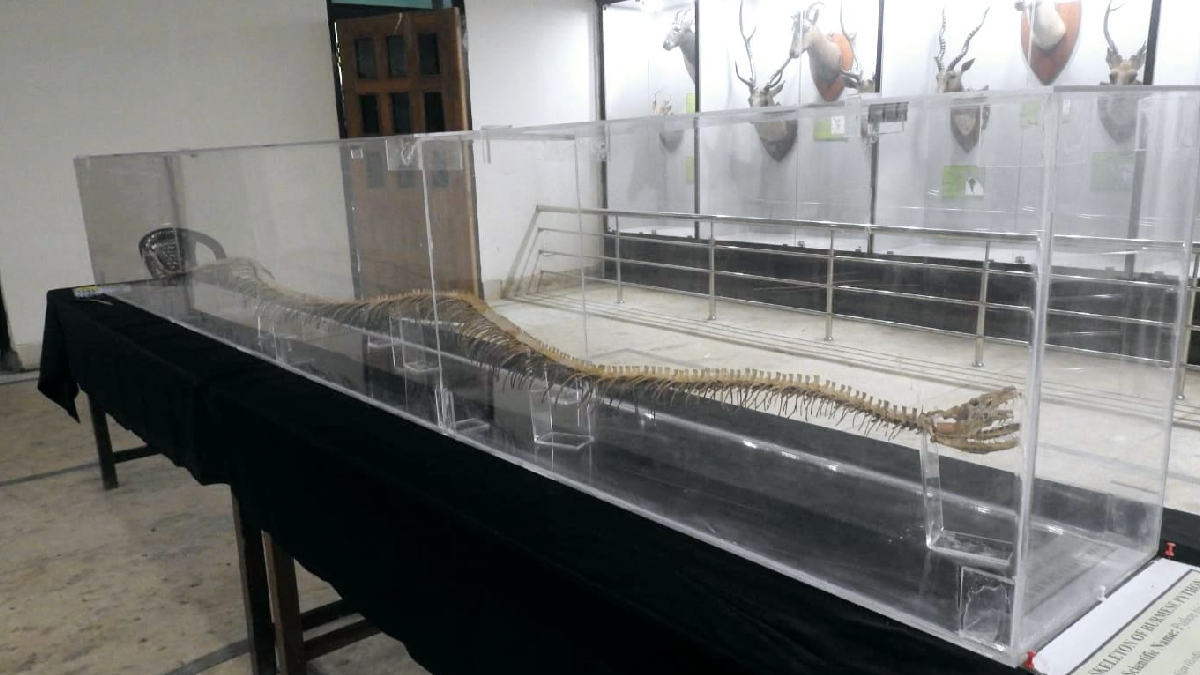- Courses
- GS Full Course 1 Year
- GS Full Course 2 Year
- GS Full Course 3 Year
- GS Full Course Till Selection
- Online Program
- GS Recorded Course
- NCERT (Recorded 500+ Hours)
- Polity Recorded Course
- Geography Recorded Course
- Economy Recorded Course
- AMAC Recorded Course
- Modern India, Post Independence & World History
- Environment Recoded Course
- Governance Recoded Course
- Science & Tech. Recoded Course
- International Relations and Internal Security Recorded Course
- Disaster Management Module Course
- Ethics Recoded Course
- Essay Recoded Course
- Current Affairs Recoded Course
- CSAT
- 5 LAYERED ARJUNA Mentorship
- Public Administration Optional
- ABOUT US
- OUR TOPPERS
- TEST SERIES
- FREE STUDY MATERIAL
- VIDEOS
- CONTACT US
India’s First Wildlife Biobank at Darjeeling Zoo
India’s First Wildlife Biobank at Darjeeling Zoo
28-03-2025

- India’s first wildlife biobank running at the Padmaja Naidu Himalayan Zoological Park (Darjeeling Zoo) in West Bengal.
- This state-of-the-art facility, which became operational in July 2024, is dedicated to preserving genetic material from endangered animal species.
What is a Wildlife Biobank?
- A biobank, also known as a frozen zoo, is a repository that collects and stores biological samples such as DNA, tissues, and reproductive cells from animals.
- These samples are cryogenically preserved at ultra-low temperatures (-196°C in liquid nitrogen) to maintain genetic diversity for conservation and research.
Key Features of the Darjeeling Zoo Biobank
- Focus on Endangered Species: The biobank prioritizes animals at risk of extinction, including rare alpine species like snow leopards, red pandas, and Himalayan wolves.
- Preservation Method: Samples, including cells, tissues, and reproductive material from deceased animals, are stored in cryogenic conditions to ensure long-term conservation.
- Collaborating Institutions: The project is undertaken by Darjeeling Zoo, in partnership with the Centre for Cellular and Molecular Biology (CCMB) under the Ministry of Science and Technology.
- Future Expansion: Plans are in place to establish similar biobanks at Delhi National Zoo and Nandankanan Zoological Park (Odisha).
Significance of the Biobank
- Scientific Research & R&D:
- Enables studies on genetic mutations, evolutionary biology, and climate change impacts.
- Provides reference material for forensic investigations related to wildlife crimes.
- Wildlife Conservation:
- Prevents genetic loss by preserving genetic diversity.
- Assists in potential revival and breeding programs for critically endangered species.
- Successful precedents include the revival of species like the American black-footed ferret (its first clone was made public in 2021 using DNA preserved since 1988) and northern one-horned rhino (the last male member died in 2018) using stored DNA.
Role of Biobanks in Conservation and Medicine
- Wildlife Biobanks: Preserve endangered animal species for future breeding and conservation efforts.
- Human Biobanks: Store human biological samples like DNA, blood, and tissues for medical research.
- India’s Biobank Network: As of 2024, 19 registered biobanks are operational, supporting genetic studies, disease research, and personalized medicine.
- Regulatory Needs: India requires comprehensive biobanking laws to regulate ethical storage, sharing, and utilization of biological material.
What is Cryogenics?
|
About Padmaja Naidu Himalayan Zoological Park
|


